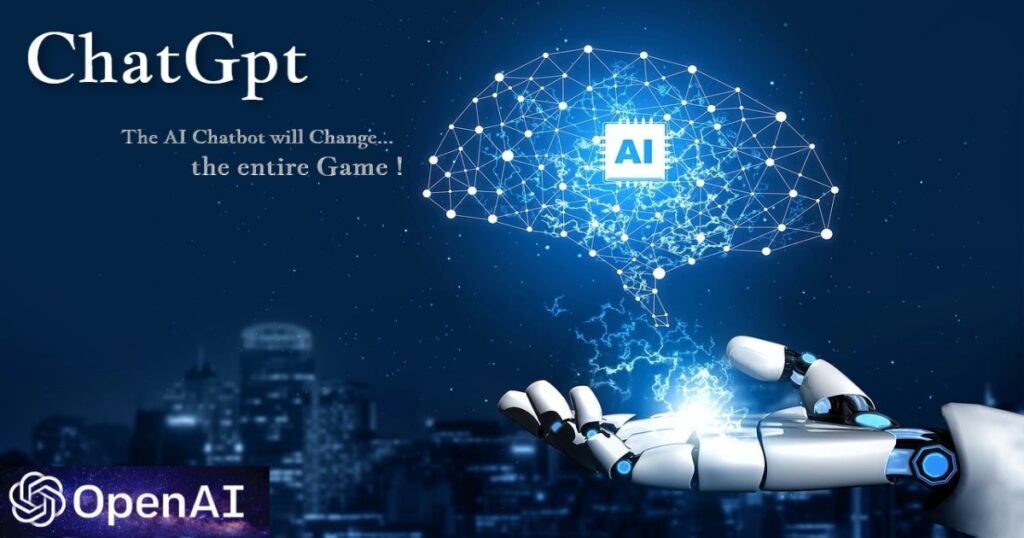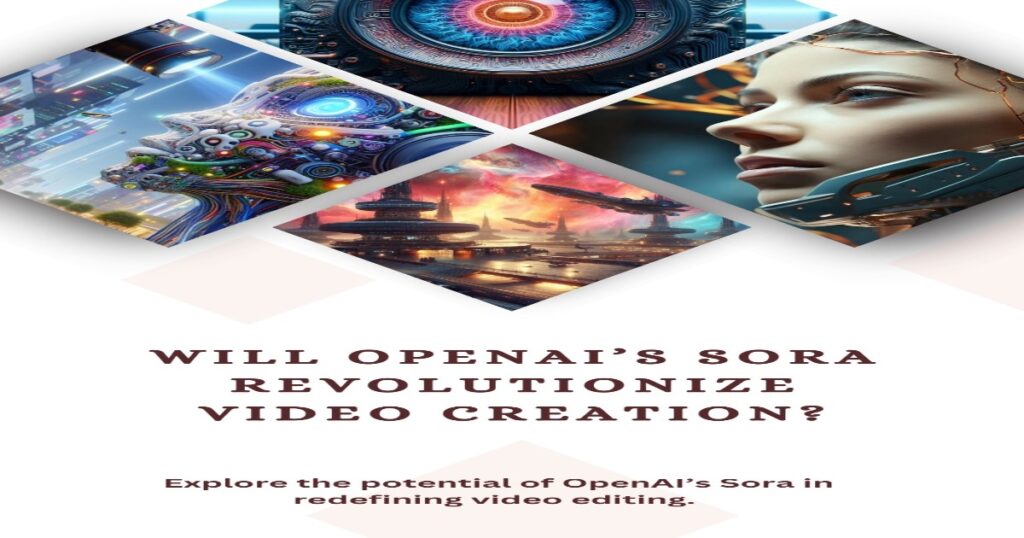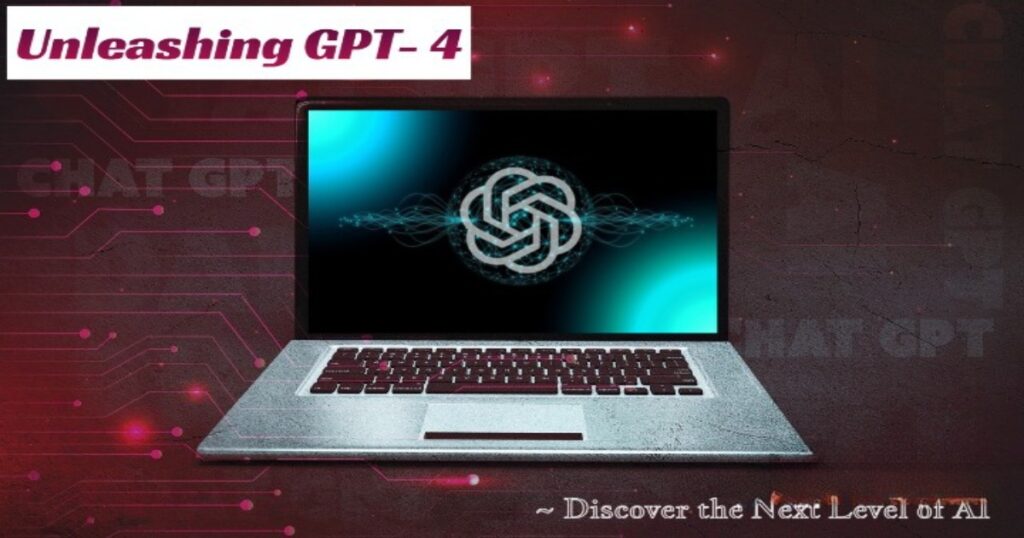ChatGpt: The AI Chatbot Taking World by Storm: For years, there has been worldwide fear of Artificial Intelligence (AI) and its impending takeover of the world. But who knew that it would start with the world of art and literature. In today’s fast-paced business world, it’s important to find ways to maximize your productivity and streamline your workflow.
Introducing ChatGpt, the AI-powered chatbot that can help streamline your workflow and improve your productivity. With natural language processing and machine learning capabilities, ChatGpt can handle a variety of tasks, from scheduling appointments to answering frequently asked questions.
It’s like having a virtual assistant at your fingertips, available 24/7 to help you get things done. Once it was released, ChatGpt gained great attention and traffic, causing much discussion on online platforms. What is the magic of ChatGpt that makes people so crazy about it?
In this blog post, we’ll take a closer look at ChatGpt and how it can help you save time and improve your productivity. So, stay tuned!
What Exactly Is ChatGpt?
After months of dominating the internet with its AI image generator Dall-E 2, OpenAI is back in everyone’s social media feeds thanks to ChatGpt. ChatGpt (Generative Pre-trained Transformer) is a chatbot launched by OpenAI in November 2022. It is built on top of OpenAI’s GPT-3.5 family of large language models, and is fine-tuned with both supervised and reinforcement learning techniques.
- ChatGpt is a chatbot that uses natural language processing (NLP) and machine learning to assist businesses with a variety of tasks. With ChatGpt, you can automate routine tasks, answer customer queries, schedule appointments, and so on.
- It was launched as a prototype on November 30, 2022, and quickly garnered attention for its detailed responses and articulate answers across many domains of knowledge. It is worth mentioning that it took Chat GPT only 5 days to reach 1M million users which is a record within itself.
One of the key features of ChatGpt is its ability to generate human-like text responses to prompts. This makes it useful for a wide range of applications, such as creating chatbots for websites or forums, customer service, generating responses to questions in online forums, or even creating personalized content for social media posts.
How Does ChatGpt Work?
ChatGpt is a cutting-edge chatbot developed by OpenAI, a leading artificial intelligence research laboratory. This chatbot is powered by a state-of-the-art language generation model called GPT-3, which stands for “Generative Pre-trained Transformer 3”.
- Actually, the Generative Pre-trained Transformer 3 (GPT-3) is an autoregressive language model that uses deep learning to produce human-like text.
- GPT-3, which was introduced in May 2020, and was in beta testing as of July 2020, is part of a trend in natural language processing (NLP) systems of pre-trained language representations. It has learned to generate human-like text by predicting the next word or phrase based on the context of the conversation.
- It is the third-generation language prediction model in the GPT-n series (and the successor to GPT-2) created by OpenAI, a San Francisco-based artificial intelligence research laboratory.
- The quality of the text generated by GPT-3 is so high that it can be difficult to determine whether or not it was written by a human, which has both benefits and risks.

To use ChatGpt, you just need to ask any question or type any topic. The chatbot will then generate a response based on the words and phrases you have typed. It will try to continue the conversation as naturally as possible, using its vast knowledge of language and context to generate appropriate responses.
In addition, OpenAI continues to gather data from ChatGpt users that could be used to further train and fine-tune ChatGpt. Users are allowed to upvote or downvote the responses they receive from ChatGpt; upon upvoting or downvoting, they can also fill out a text field with additional feedback.
Features of ChatGpt
ChatGpt has several key features that make it a powerful and useful tool for businesses, education, researchers, information, and anyone looking to have a meaningful conversation with a chatbot.
Here are some of its standout features:
1. Contextual Understanding
ChatGpt has been trained on a massive dataset of text from the internet, books, and other sources, and it has learned to understand and use context in conversation.
This includes being able to understand the meaning of words and phrases in the context of the conversation, as well as being able to use pronouns and other words that refer to previous statements to keep the conversation flowing smoothly.
2. Versatility
ChatGpt is capable of handling a wide range of conversation types, including small talk, answering questions, and participating in complex discussions on a variety of topics.
This versatility makes ChatGpt a useful tool for businesses, researchers, and anyone looking to have a meaningful conversation with a chatbot.
3. Human-Like Language Generation
ChatGpt uses its vast knowledge of language and context to generate responses that sound natural and human-like. It can also understand and use pronouns and other words that refer to previous statements.
Overall, the goal of human-like language generation is to make the conversation with ChatGpt feel more natural and engaging for the user.
4. Customization
ChatGpt can be customized to suit the needs of different businesses and organizations. For example, it can be trained on specific datasets or given specific instructions to follow in conversation.
It can also be useful for researchers or developers who want to experiment with the chatbot and test its capabilities in different scenarios. Overall, customization allows users to modify and control the behaviour of ChatGpt to better suit their needs and goals.
5. Scalability
Scalability is an important consideration for any chatbot, as it directly impacts the chatbot’s ability to handle large volumes of traffic and keep up with user demand. ChatGpt is able to handle a high volume of conversations simultaneously, making it a good choice for businesses that need to handle a large number of customer inquiries or interactions.
6. Integration with Other Systems
Integration with other systems refers to the ability of ChatGpt to connect with and communicate with other software or platforms. For example, ChatGpt could be integrated with a customer relationship management (CRM) tool, which is a software that helps businesses manage customer interactions and data.
7. Multilingual Support
Multilingual support in ChatGpt refers to the chatbot’s ability to understand and generate text in multiple languages. ChatGpt is able to understand and generate text in multiple languages, making it a useful tool for businesses with a global presence or customers who speak different languages.
This means that ChatGpt can hold conversations with users in languages other than English, such as Spanish, French, Bengali, Hindi, or Chinese.
8. Personalization
Personalization is a feature of ChatGpt that allows the chatbot to tailor its responses to individual users based on their past interactions and preferences. This can help to provide a more personalized and relevant experience for users, as the chatbot is able to adapt to their specific needs and preferences.
9. Sentiment Analysis
ChatGpt is able to detect the sentiment (emotional state) of users in conversation, which can be useful for businesses that want to understand and respond to the feelings of their customers. This is done by analyzing the words and phrases used in the conversation and identifying patterns and indicators of positive, negative, or neutral sentiment.
10. Knowledge Base
ChatGpt has a vast knowledge base built into it, allowing it to provide accurate and up-to-date information on a wide range of topics. This can include general knowledge facts, information about specific industries or businesses, and answers to common questions.
The knowledge base is an important feature of ChatGpt because it allows the chatbot to provide accurate and useful information to users in real-time, without the need for human intervention.
11. Data Security
ChatGpt is designed with data security in mind, with features such as encryption and secure storage of data to protect user information.
In the context of ChatGpt, data security refers to the measures in place to protect the data that the chatbot collects and processes during its interactions with users. This can include measures such as encryption of data in transit and at rest, secure storage of data, and secure access controls to prevent unauthorized access to data.
12. Continuous Learning
Continuous learning is an important feature of many artificial intelligence systems, as it allows them to become more intelligent and capable over time. This particular feature allows the chatbot to learn and improve over time as it gathers more data and experiences through its interactions with users.
Continuous learning allows ChatGpt to better understand the nuances of language and conversation, and to better anticipate and respond to user needs and requests. This can lead to more natural and engaging conversations with users, and can make ChatGpt a more effective tool for businesses, researchers, and other users.
Overall, ChatGpt is a highly advanced chatbot that can hold engaging and natural conversations with users. Its many features make it a powerful tool for businesses, researchers, and anyone looking to have a meaningful conversation with a chatbot.
Limitations of ChatGpt
ChatGpt is a powerful and useful AI chatbot developed by OpenAI, but like any digital tool, it has some limitations.
Here Are 10 Points To Consider When Using ChatGpt:
1. Limited Emotional Range
Chatbots are programmed to generate text based on patterns and rules that they have learned from a dataset, and they do not have the ability to feel emotions in the same way that humans do. While ChatGpt is able to hold natural and engaging conversations, it is not capable of replicating the full range of human emotions and behaviours.
As a result, ChatGpt may not be able to fully understand or respond to the emotional state of a user, and its responses may not convey emotions in a natural or realistic way.
2. Limited Conversation Types
While ChatGpt is versatile and able to handle a wide range of conversation types; there may be certain topics or conversation styles that it is not able to handle effectively. This could be due to a lack of training data or relevant knowledge on the topic, or it could be due to the complexity or ambiguity of the conversation.
3. Limited Personalization
It refers to the ability of ChatGpt to tailor its responses to individual users based on their past interactions and preferences. While ChatGpt is able to personalize its responses to some extent, it may not be able to provide a fully personalized experience for every user.
4. Contextual Misunderstandings
ChatGpt is able to understand and use context in conversation to a certain extent, but it may not always interpret the meaning of words and phrases correctly. This can occur if ChatGpt lacks sufficient context or if the words and phrases are used in an unexpected or unusual way.
Contextual misunderstandings can disrupt the flow of conversation and make it difficult for ChatGpt to provide relevant and meaningful responses.
5. Difficulty with Unusual Inputs
ChatGpt is designed to handle a wide range of inputs, but it may not be able to process or understand inputs that are significantly different from what it has been trained on. However, if an input is significantly different from what ChatGpt has seen during its training, it may not be able to process or understand it.
6. Inaccurate Information
ChatGpt has a vast knowledge base built into it, but it is not always able to provide accurate or up-to-date information on every topic. And it is important for users to be aware that ChatGpt may not always provide accurate information and to verify the information it provides before relying on it.
7. Error-Prone Responses
As with any machine learning model, ChatGpt is not perfect and may produce errors or mistakes in its responses. These errors or mistakes can occur for a variety of reasons, such as misunderstanding the context or intent of the conversation, not having access to accurate or up-to-date information, or simply not being able to generate a correct response.
8. Data Security Concerns
Depending on its implementation, ChatGpt may not have robust security measures in place to protect user data from unauthorized access or misuse.
To protect user data, ChatGpt may have security measures in place such as encryption, secure storage of data, and access controls. However, the extent and effectiveness of these measures may vary depending on the implementation of ChatGpt.
9. Limited Concurrent Conversations
Depending on its implementation, ChatGpt may not be able to handle a large number of concurrent conversations without experiencing delays or errors. This means that if the chatbot is receiving and responding to a high volume of conversations simultaneously, it may experience delays or errors.
10. Limited Self-Learning
While ChatGpt is able to learn and improve over time, there may be limits to its self-learning capabilities and it may eventually reach a point where it is no longer able to improve.
For example, ChatGpt may eventually reach a point where it is no longer able to improve its performance or accuracy based on its interactions with users. This could be due to various factors, such as the limitations of the machine learning algorithms used by ChatGpt or the quality and quantity of data available for it to learn from.
Overall, ChatGpt is a powerful and useful chatbot, but it is important to be aware of its limitations and to use it appropriately. By understanding the capabilities and limitations of ChatGpt, users can make the most of this tool and have meaningful and engaging conversations with it.
Benefits of Using ChatGpt
ChatGpt is a Game-Changing Technology that can revolutionize the way you provide customer service on your blog. In addition to its efficiency and speed, ChatGpt can provide personalized and engaging responses to individual users, tailoring its communication to their specific needs and preferences.
Here are some potential benefits of using ChatGpt:
1. Improved Customer Service
ChatGpt can provide quick and accurate responses to customer inquiries, improving the overall user experience and satisfaction.
This can be achieved through the use of advanced artificial intelligence and natural language processing algorithms, which allow the chatbot to understand and respond to user requests in a way that is similar to a human customer service representative.
2. Streamlined Communication
ChatGpt can provide a single point of contact for users, streamlining communication and improving the efficiency of your customer service process. This can help to streamline the customer service process by providing a clear and efficient means of communication for users.
3. Customization
ChatGpt can be customized to match the tone and style of your brand, making it a seamless extension of your customer service team. By allowing for customization, ChatGpt can provide a more personalized and effective customer service experience.
4. Increased Efficiency
ChatGpt can handle multiple chat conversations simultaneously, allowing you to provide assistance to more users in less time. By automating routine tasks and conversations, ChatGpt can also free up staff to focus on more high-value tasks, further improving efficiency.
5. Improved Accessibility
ChatGpt can provide assistance to users with disabilities or those who may have difficulty accessing traditional customer service channels. By using ChatGpt, these users can receive assistance through an accessible interface, such as a chat window or a text-to-speech system, rather than being limited to channels that may not be fully accessible to them.
This can help to ensure that all users have equal access to your blog’s customer service and support.
6. Competitive Advantage
By offering advanced customer service through ChatGpt, you can differentiate your blog from competitors and stand out in the market. By using ChatGpt to provide customer service, a business can differentiate itself from competitors who may not be using this type of technology.
ChatGpt can provide fast and accurate responses to customer inquiries, improving the overall user experience and satisfaction. This can give a business a competitive edge, as customers may be more likely to choose a company that offers superior customer service.
7. Available 24/7
ChatGpt is able to provide assistance to users at any time of day or night, every day of the year. It can operate around the clock, providing assistance to users even when your team is not available.
This can be especially helpful for businesses that operate around the clock or have customers in different time zones, as it allows users to receive assistance at their convenience.
8. Cost Savings
ChatGpt can reduce the need for human customer service staff, potentially resulting in cost savings for your business. By using ChatGpt to handle customer inquiries, you can potentially reduce labour costs and increase efficiency, resulting in cost savings for your business.
9. Data and Insights
ChatGpt can provide valuable data and insights about your customers and their needs, helping you to improve and optimize your products and services. This can include data on the types of questions and issues that users are asking about, the language and tone they are using, and the specific needs and preferences they have.
10. Scalability
ChatGpt can easily scale to meet the needs of your business, whether you have a small or large customer base. It is designed to be scalable, allowing it to easily meet the needs of a growing business or customer base.
In conclusion, ChatGpt is a powerful tool that can significantly enhance the efficiency, effectiveness, and customer satisfaction of any kind of business. With its advanced artificial intelligence capabilities, it can provide quick and accurate responses to user inquiries, improving the overall user experience.
ChatGpt FAQs
1. Who Owns ChatGpt?
ChatGpt (Generative Pre-trained Transformer) is a chatbot owned by OpenAI. It was launched in November 2022.
OpenAI was founded in San Francisco, in late 2015 by a group of entrepreneurs, researchers, and philanthropists, including Elon Musk, Sam Altman, and Greg Brockman.
2. Is ChatGpt free?
YES! ChatGpt is currently a free service.
3. Is There Any App Available for ChatGpt?
Although there is currently no dedicated app that allows you to use ChatGpt on Android devices, you can still access the chatbot through your web browser.
To access the chatbot, simply visit the OpenAI website. Once you are there, you will see an option to use ChatGpt, which you can click on to start a conversation with the chatbot.
4. Is ChatGpt 100% accurate?
Although ChatGpt is designed to offer accurate and helpful information, it is not always possible for it to provide the most current or relevant answers. Like any machine learning model, ChatGpt is not perfect and may produce errors or mistakes in its responses.
5. Can ChatGpt Be Used On Mobile Devices?
It is possible to use ChatGpt on mobile devices, either by accessing it through a web browser or by using a chat app that supports its integration. Simply open a browser or chat app on your mobile device and follow the instructions to start a conversation with ChatGpt.
6. Is ChatGpt Available In Different Languages?
YES, ChatGpt is able to handle conversations in a wide range of languages. Examples: Spanish, French, Bengali, Hindi, Chinese, and so on.
7. How Does ChatGpt Generate Text?
ChatGpt uses artificial intelligence (AI) to enable natural-language conversations. It works by using a deep learning model which is trained on large datasets of human conversations.
When generating text, ChatGpt first receives a prompt or input from the user, which could be a question, a statement, or other types of text. It then uses its knowledge of language patterns and its understanding of the context of the conversation to generate a response.
8. Is ChatGpt Able To Understand And Respond To Context And Previous Input?
YES, ChatGpt is able to understand and use the previous context in conversation to a certain extent.
9. Can ChatGpt Be Used To Build Chatbots Or Conversational AI Systems?
YES, ChatGpt can be used to build chatbots or conversational AI systems.
ChatGpt is able to understand and use context in conversation to a certain extent, making it a useful tool for creating chatbots and other conversational AI systems that are able to respond appropriately to a wide range of prompts and inputs.
10. How Does The Performance Of ChatGpt Compared To Other Language Models?
It is difficult to compare the performance of ChatGpt to other language models in a general sense, as the performance of any language model can vary depending on a wide range of factors, including the quality and quantity of the training data, the specific tasks and goals for which it is being used, and the specific context in which it is being applied.
But, in general, ChatGpt is considered to be a highly advanced and capable language model that is able to generate text that is highly coherent and natural-sounding.
11. Will ChatGpt Replace Google In The Future?
It is unlikely that ChatGpt or any other chatbot or language model will replace Google or other search engines in the near future. While ChatGpt and other language models are highly advanced and able to generate human-like text and engage in natural-sounding conversations, they are not designed to perform many of the functions of a search engine such as Google.
…. ….. …. …….
Hopefully, this article will provide enough information on ‘ChatGpt: The AI Chatbot Taking World by Storm’, which helps you to know about the ChatGpt in details.
If you have any queries, please let me know in the comment box, and we will try to answer your question as soon as possible. THANK YOU & DON’T FORGET TO SHARE WITH YOUR FRIENDS Who Need This Informative Article.
Trending Topics
- What Is Cryptocurrency: Most Amazing Thing You Can Get
- Blockchain Technology – The New Era For Crypto
- What Is NFT – How To Create And Sell NFTs?
- Web 3.0 – The Next Generation Of The Internet
- What Is The IoT – A Complete Guide For Beginners
- What Is Metaverse – Full Information








Pingback: GPT-4: The Most Powerful AI-Language Model Yet - Techworld18